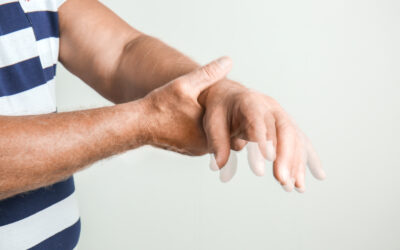Facing a diagnosis of Parkinson’s disease can feel overwhelming for patients and their caregivers alike. The effects of the disease will almost certainly impact daily life, making once-simple activities feel daunting. But there’s hope for living well with the disease. Physical therapy is one of the most effective ways to improve mobility, independence, and quality of life for Parkinson’s patients.
What helps to treat Parkinson’s disease?
Parkinson’s disease requires a comprehensive treatment approach involving primary care providers, specialists, and physical therapists that targets both its physical and non-motor effects. A typical plan might include medication, lifestyle changes, and targeted therapies to mitigate the immediate symptoms and prolong general function.
- Medication: Doctors may prescribe drugs like levodopa to help manage motor symptoms by increasing dopamine levels in the brain.
- Surgical Options: Your primary care provider or medical team will keep you informed of potentially beneficial surgical procedures for your unique Parkinson’s symptoms.
- Lifestyle Changes: Activities like regular exercise, staying hydrated, and eating a balanced diet all contribute to managing Parkinson’s symptoms well.
- Physical Therapy: Among the most highly recommended non-invasive interventions, physical therapy helps address Parkinson’s unique motor challenges. It focuses on helping the brain and body to move more effectively, from strength building to neuromuscular re-training.
Together, these approaches form a holistic framework to manage the condition, offering patients better mobility and an improved sense of well-being.
Parkinson’s physical therapy interventions
Physical therapy for Parkinson’s relies on both holistic therapies to constantly re-calibrate the brain’s control of the body’s muscles as well as targeted treatments for specific symptoms, like loss of balance. Our neurologic clinical specialists at Armor Physical Therapy can utilize a number of evidence-based treatments to help treat Parkinson’s at any stage of its development, and we encourage you to talk to a provider to learn more about what may be available for your specific situation.
LSVT LOUD and BIG
One emerging treatment for both fine and gross motor skills is Lee Silverman Voice Treatment (LSVT), which has two branches of treatments for people with Parkinson’s. LSVT uses what’s called amplitude training to help people who may be tending to minimize their movements in an attempt to control tremors or accuracy, which can end up worsening their motor skills over time.
LSVT can include the following benefits:
- LSVT LOUD – speech treatment that can improve vocal volume, increase range of facial expressions, improve intelligibility, and help boost self-confidence
- LSVT BIG – motor control treatment that can quicken walking speed with larger steps, improve balance, and foster a better quality of life
Reciprocal Patterns
Part of neuromuscular training frequently involves activating both hemispheres of the brain to encourage coordination across both sides of the body. Reciprocal pattern training can be engaging and fun, with several modalities that can be tailored to the person’s preferences for treatment and personal interests, including:
- Dance therapy
- Occupational therapy and games
- Recumbent bicycle riding
- Tai chi
- Elliptical machine workouts
Balance/gait training
A staple of Parkinson’s physical therapy treatments is balance and gait training, especially for those who want to remain independent for as long as possible. Balance training and gait assessments are highly personalized treatment plans that revolve around strengthening the muscles involved in balance, training the vestibular system to provide accurate sensations of body position, and education on how to mitigate the effects of Parkinson’s on balance in the future.
With balance and gait training, a physical therapist can help you or your loved one overcome the “freezing” that so often accompanies Parkinson’s disease. Enhancing balance in this way helps build confidence and reduce the fear of falling, which often limits a person’s lifestyle and overall happiness.
Strength and flexibility physical therapy
Muscle weakness and declining functional independence are common symptoms of Parkinson’s that can be treated with highly successful physical therapy techniques.
For example, working on grip strength improves the ability to handle everyday tasks, from opening jars to writing. Strengthening leg muscles supports walking, balance, and longer periods of physical activity. And resistance training can help slow the loss of muscle mass wherever it’s most substantial.
Especially when paired with other therapies, strength exercises lead to improved overall mobility and a greater ability to participate in daily life.
Parkinson’s physical therapy treatment in Kalamazoo, MI
At Armor Physical Therapy, we’re sensitive to the journey that each person is on when they experience a Parkinson’s diagnosis in a family member. That’s why we lead with empathy every step of the way. We’ve seen how physical therapy not only addresses physical symptoms but also empowers patients emotionally, helping both them and their caregivers feel less alone during this challenging time.
Learn more about the very real options and opportunities you have as a caregiver or someone who’s facing a Parkinson’s diagnosis in Southwest Michigan by calling one of our office locations near you or by requesting your first appointment online today.
